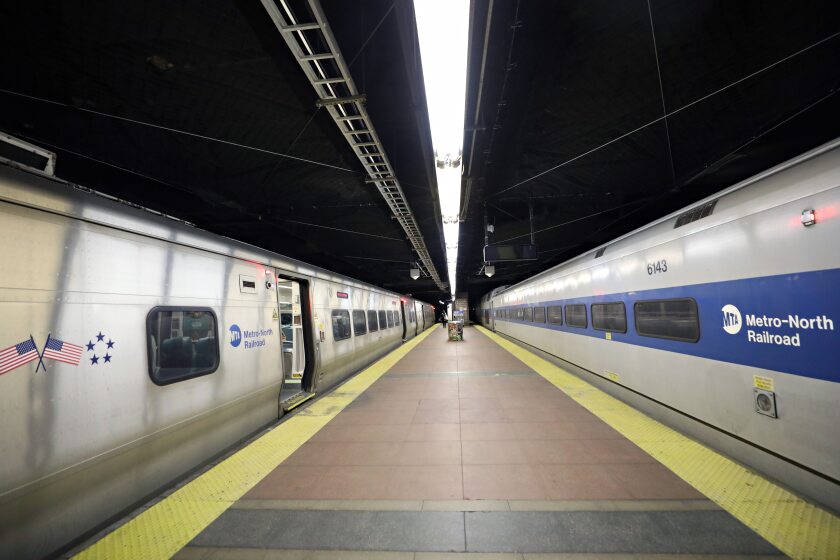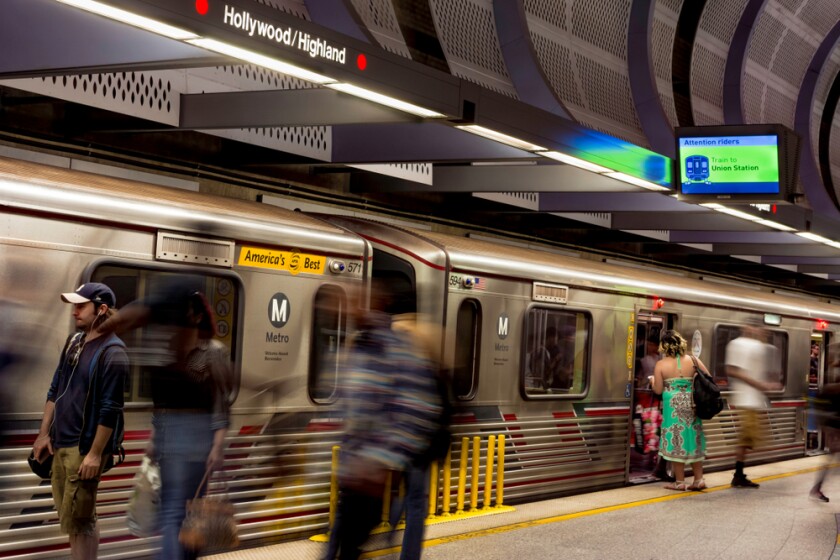In Brief:
Hoping to prevent drastic cuts to bus and train service and head off lasting damage to transit systems and the regional economy, Bay Area legislators announced a plan last month to raise tolls on seven state-owned bridges and send the additional revenue to the region’s beleaguered transit agencies.
In a press conference, state Sen. Scott Wiener said he would introduce a bill to raise the tolls on the seven bridges by $1.50 and keep them raised for five years. The change would generate an estimated $180 million a year, providing an additional $900 million to Bay Area transit systems over five years, he said.
“This [bill], while it does not solve the entirety of the problem, will get us to a place where we at least have space to breathe,” Wiener said.
What Does the State Budget Deal Cover?
The bill was announced a few weeks after state lawmakers agreed to increase funding for transit operations as part of the broader negotiation around the state budget. As Governing previously reported, California’s transit systems were seeking $5.15 billion in emergency operations support from the state to avoid cutting service. The request came after Gov. Newsom proposed cutting $2 billion in support for transit agencies’ capital projects amid an anticipated statewide revenue shortfall. Transit agencies and advocates framed their request as a critical interim step to help them navigate the fiscal cliff.
The agreement between the state Senate and state Assembly provides additional operating support for transit but falls well short of the $5.15 billion request. The deal would restore the $2 billion in cuts that Newsom proposed and allow agencies to repurpose them for everyday operations rather than long-term capital projects. It also provides an additional $1.1 billion from the state’s cap-and-trade program that agencies may use for operations.
The deal, which Newsom agreed to late last month, would provide some breathing room for agencies facing tough decisions about how to balance their budgets in the immediate term. It’s “as big of a step forward as we are likely to see” this year on transit funding, Michael Pimentel, executive director of the California Transit Association, told Governing after the Legislature announced the agreement.
But it could also force agencies to make difficult tradeoffs if they choose to use capital funds to cover operating costs, he said. Agencies could lose out on billions of dollars in federal matching funds for new capital projects if they use more local funds to run daily operations, for example. And dedicating more cap-and-trade money to operations instead of zero-emission vehicles could delay the process of eliminating carbon emissions from transit fleets.
“We have been clear-eyed with our members that if ultimately this is what passes, we’re going to have to reconvene and continue the efforts likely in the next year,” Pimentel said.
Will the Deal Help the Bay Area Avoid the Fiscal Cliff?
While the fiscal cliff is a statewide issue, Bay Area transit agencies are uniquely challenged. San Francisco’s downtown recovery is the slowest in the nation. Ridership on BART this year is averaging about 35 percent of what it was during the same period before the pandemic in 2019. The agency faces a $93 million deficit in Fiscal Year 2025, according to a spokesperson.
It’s still not clear exactly how much funding from the state budget deal will flow to BART and other Bay Area agencies. But it won’t be enough to cover the entire budget gap over the next half-decade. The state deal could only provide “about a third of what we need in order to avoid drastic service cuts next year,” said Jeffrey Tumlin, SFMTA’s director of transportation, at the press conference on Monday.
Longer term, BART and SFMTA, like other agencies, are planning service changes to respond to changing travel demand. In September, BART is planning to expand night and weekend service and “slightly scale back” weekday service, according to an agency spokesperson, partly in “recognition that hybrid work has lessened the demand for traditional rush hour service and a reflection that weekend ridership has rebounded more quickly than weekdays.”
The proposed bridge toll increase will require two-thirds support in the state Legislature in order to pass. That’s a heavy lift, advocates acknowledge, but likelier if all Bay Area lawmakers are aligned behind it. At the press conference, Wiener noted that even the additional toll revenue wouldn’t cover the full five-year gap in Bay Area transit funding. But it would get agencies into fiscal year 2026, he said. Transit agencies and regional leaders are gearing up to run a potential ballot measure that year to create a more stable local operating subsidy for transit agencies.
Wiener and others say the toll increases are a necessary but temporary solution to provide stability for the region’s transit system. Without additional funding, the agencies face a “death spiral” of service cuts, layoffs and fewer riders.
“Transit is not optional,” Wiener said. “Will the Bay Area be a better place or a worse place if we see massive transit cuts?”
Related Articles














